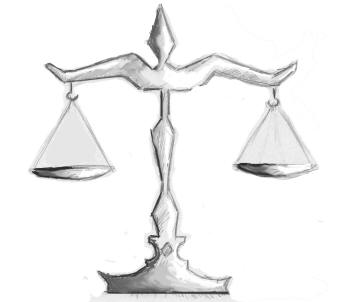Catholic Medical Quarterly Volume 66(1) February 2016
Hastened Death and Analgesic Drugs at End of Life: A Problem and a Possible Solution
Dr Andrew Kim
 Is it ever morally permissible for a doctor or nurse to administer pain
medication that he or she knows will hasten the death of the patient?
Is it ever morally permissible for a doctor or nurse to administer pain
medication that he or she knows will hasten the death of the patient?
My use of the term “will” is intentional and is at the heart of the issue I aim to treat in this brief essay.
It seems possible to me that there is a morally relevant distinction between the action of a doctor or nurse who administers drugs that he or she foresees “will” hasten the death of the patient and the action of a doctor or nurse who administers drugs that he or she foresees “may” hasten the death of the patient. The term “may” suggests a probabilistic judgment - this may or may not happen as a result of my action. On the other hand, the term “will” suggests certainty - this will come about as a result of my choice.
There does not appear to be any question about the moral permissibility of prescribing drugs that “may” hasten death so long as the action passes the principle of double effect. The object of the act is good or neutral, the doctor must have the right intention, the evil effect is not the means to the good effect, and there is a proportionately serious reason. The Catechism states as follows: “The use of painkillers to alleviate the sufferings of the dying, even at the risk of shortening the sick person’s days, can be morally in conformity with human dignity if death is not willed either as an ends or a means, but only foreseen and tolerated as inevitable.” [1] I take “at the risk” here as indicating a probabilistic judgment, which seems consistent with the position that is it is morally permissible for the doctor or nurse to prescribe the pain medication when foreseeing that the act “may” hasten the death. The term “may” is also used in the Ethical Religious Directives for Catholic Health Care Services: “Medicines capable of alleviating or suppressing pain may be given to a dying person, even if this therapy may indirectly shorten the person’s life so long as the intent is not to hasten death” [2] The use of the term “may” here, again, seems to indicate a probabilistic judgment on the part of the doctor or nurse.
If it is clear that the doctor or nurse may administer the medication at the risk of hastening death, the question remains of whether the doctor or nurse may still administer the medication if he or she regards the hastened death as a certainty. The statements just cited from the Catechism and the ERD seem to leave this an open question. However, one does find the stronger “will” language in the Congregation for the Doctrine of the Faith’s Declaration on Euthanasia:
At this point it is fitting to recall a declaration by Pius XII, which retains its full force; in answer to a group of doctors who had put the question: “Is the suppression of pain and consciousness by the use of narcotics...permitted by religion and morality to the doctor and patient (even at the approach of death and if one foresees that the use of narcotics will shorten life)?” The Pope said: “If no other means exist, and if, in the given circumstances, this does not prevent the carrying out of other religious and moral duties: Yes.” [3]
 This seems to clearly indicate that there could be cases where the
doctor or nurse can be morally justified in administering the pain
medication even if he or she foresees that this act will (not may) hasten
the death of the patient. However, the document goes on in the very next
sentence to say the following: “In this case, of course, death is in no
way intended or sought, even if the risk of it is reasonably taken.”[4]
This risk language is thus joined without explanation to the stronger
language of the preceding sentences. Prominent moral theologian and
bioethicist Nicanor Austriaco O.P. rightly points out the importance of
the intention and associated action of the doctor or nurse in order to
determine the rightness or wrongness of the act. For example, if one nurse
administers the minimum dose of pain medication to a patient and another
nurse administers ten times the recommended dose to a different patient,
then it seems clear that the first nurse is not intending the hastened
death whereas the second nurse is.[5] However, this leaves unanswered the
question of whether the nurse who is administering the recommended dose
can do so if he or she foresees that the act will (not may) hasten the
death of the patient.[6]
This seems to clearly indicate that there could be cases where the
doctor or nurse can be morally justified in administering the pain
medication even if he or she foresees that this act will (not may) hasten
the death of the patient. However, the document goes on in the very next
sentence to say the following: “In this case, of course, death is in no
way intended or sought, even if the risk of it is reasonably taken.”[4]
This risk language is thus joined without explanation to the stronger
language of the preceding sentences. Prominent moral theologian and
bioethicist Nicanor Austriaco O.P. rightly points out the importance of
the intention and associated action of the doctor or nurse in order to
determine the rightness or wrongness of the act. For example, if one nurse
administers the minimum dose of pain medication to a patient and another
nurse administers ten times the recommended dose to a different patient,
then it seems clear that the first nurse is not intending the hastened
death whereas the second nurse is.[5] However, this leaves unanswered the
question of whether the nurse who is administering the recommended dose
can do so if he or she foresees that the act will (not may) hasten the
death of the patient.[6]
Despite the uncertainty that the previously referenced texts seem to display, it seems to me clear that the Catholic moral tradition allows for cases where the doctor or nurse can prescribe pain medication that he or she foresees will (not may) hasten death. In the first place, there is the argument from authority. If the declaration by Pius XII really does “retain its full force,” then the suppression of pain and consciousness by the use of narcotics can be morally justifiable even in cases where the doctor or nurse foresees that the use of narcotics will shorten life. Second, there are numerous other cases where the tradition permits a doctor to engage in an action that he or she foresees will (not may) indirectly bring about death - ectopic pregnancy, and uterine cancer are two examples. However, here one could argue that the proportionately serious reason is the life of the mother. Even in end of life cases where the doctor is removing an extraordinary form of care, the proportionately serious reason could be the life of the patient, i.e., the dialysis or the ventilator is causing an infection that is killing the patient.
Nevertheless, the Catholic moral tradition clearly holds that there are some cases where the proportionately serious reason is not the saving of a life.
When inevitable death is imminent in spite of the means used, it is permitted in conscience to take the decision to refuse forms of treatment that would only secure a precarious and burdensome prolongation of life, so long as the normal care due to the sick person in similar cases is not interrupted. In such circumstances, the doctor has no reason to reproach himself with failing to help the person in danger. [7]
Even factors such as “excessive expense on the family or the community” can be taken into account when considering burden, given, of course, the context of imminent and inevitable death. If it is permissible to withhold forms of treatment that will prolong life according to a standard of burden alone even when the doctor foresees that doing so will hasten death, then it seems inconsistent if not absurd to hold that the doctor cannot administer pain medication that she foresees will hasten death according to the same standard since the end in view in both cases is the removal of pain and the unintended side effect the hastened death.
At this point, two clarifications will be helpful. First, the determination of when the doctor may adminiser pain medication that he or she foresees will hasten death (versus may hasten death) is to be taken with the utmost seriousness. It seems that a doctor or nurse who prescribes pain medication at the end of life that he or she foresees “will” hasten death must have a proportionately more serious reason for doing so than a doctor or nurse who prescribes pain medication that he or she foresees “may” hasten death. Second, it is of course the case that reasonable people may disagree with respect to the application of the principle of double effect in these cases.
When the doctor or nurse are morally justified in administering pain medication that will (not may) hasten death must be determined on a case by case basis given all relevant considerations.
In sum, everyone agrees that the Catholic moral tradition allows for a doctor or nurse to administer pain medication when he or she foresees that doing so “may” hasten death. However, for the reasons I have just finished enumerating it seems to me clear that the tradition also allows for a doctor or nurse to administer pain medication even when he or she foresees that doing so “will” hasten death, even if in such cases there would need to be a proportionately more serious reason. That this is the teaching of the Catholic moral tradition seems so clear to me that I am inclined to wonder whether the use of “risk” and “may” language in the authoritative teachings referenced earlier has more to do with the nature of the uncertainty of medical procedures than it does with a moral distinction being made. After all, from a medical standpoint, it is unclear whether the use of opioids and sedatives during a patient’s last days of life are associated with shortened survival in the first place.[8] However, if a moral distinction is being made, it is clearly the case that a doctor or nurse may in some cases administer pain medication that he or she foresees will (not may) hasten death if there is a proportionately serious reason to do so, or so I have argued.
References
- CCC no. 2279
- Ethical Religious Directives for Catholic Health Care Services no. 61
- CDF, Declaration on Euthanasia, May 5, 1980.
- Ibid.
- See Nicanor Austriaco, Biomedicine and Beatitude: An Introduction to Catholic Bioethics (Washington D.C.: Catholic University of America Press, 2011), 141.
- Such cases are exceptionally rare. See “What Makes for Good Palliative Care” Catholic Medical Quarterly 61(3) August 2011, 20-22. The author states that “double effect almost never applies in palliative care with opiates as in the correct doses they are almost always safe. But the wrong doses may be and are harmful and opiates can be used inappropriately.”
- Declaration on Euthanasia
- See Nigel Sykes and Andrew Thorns, “Sedative Use in the Last Week of Life and Implications for End-of-Life Decision Making,” Arch Intern Med 163 (2003): 341-44.
Dr Andrew Kim PhD
Department of Theology, Walsh University, Ohio
